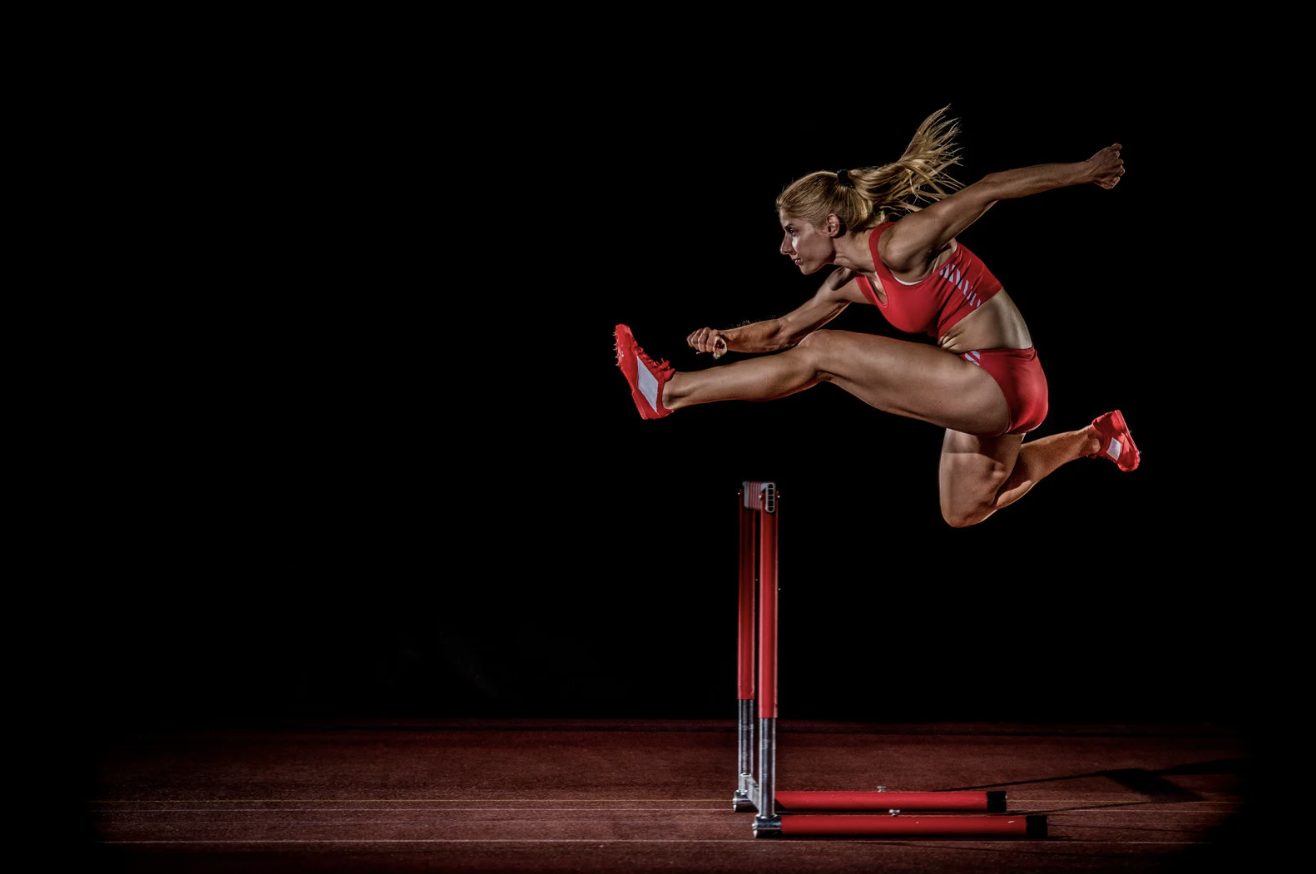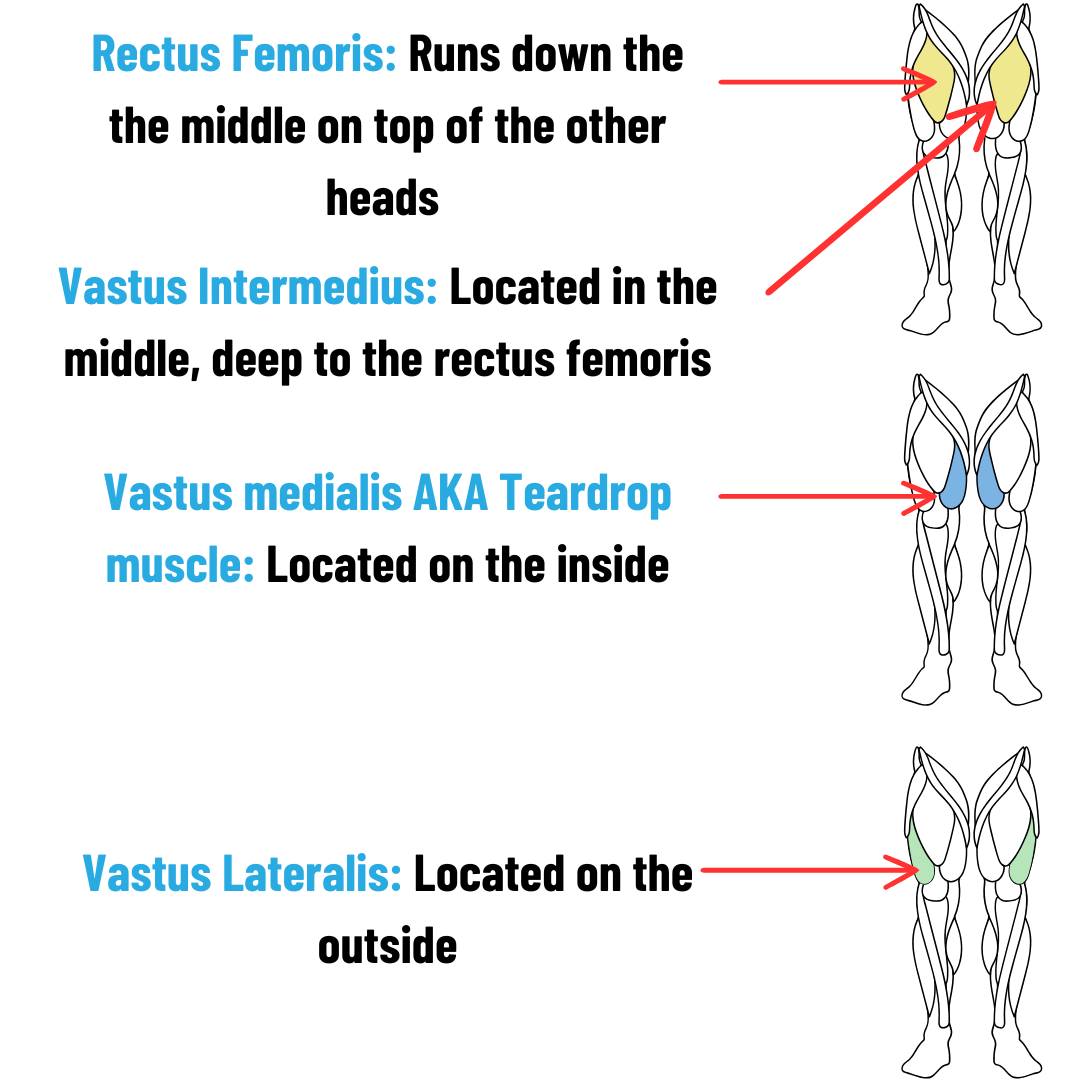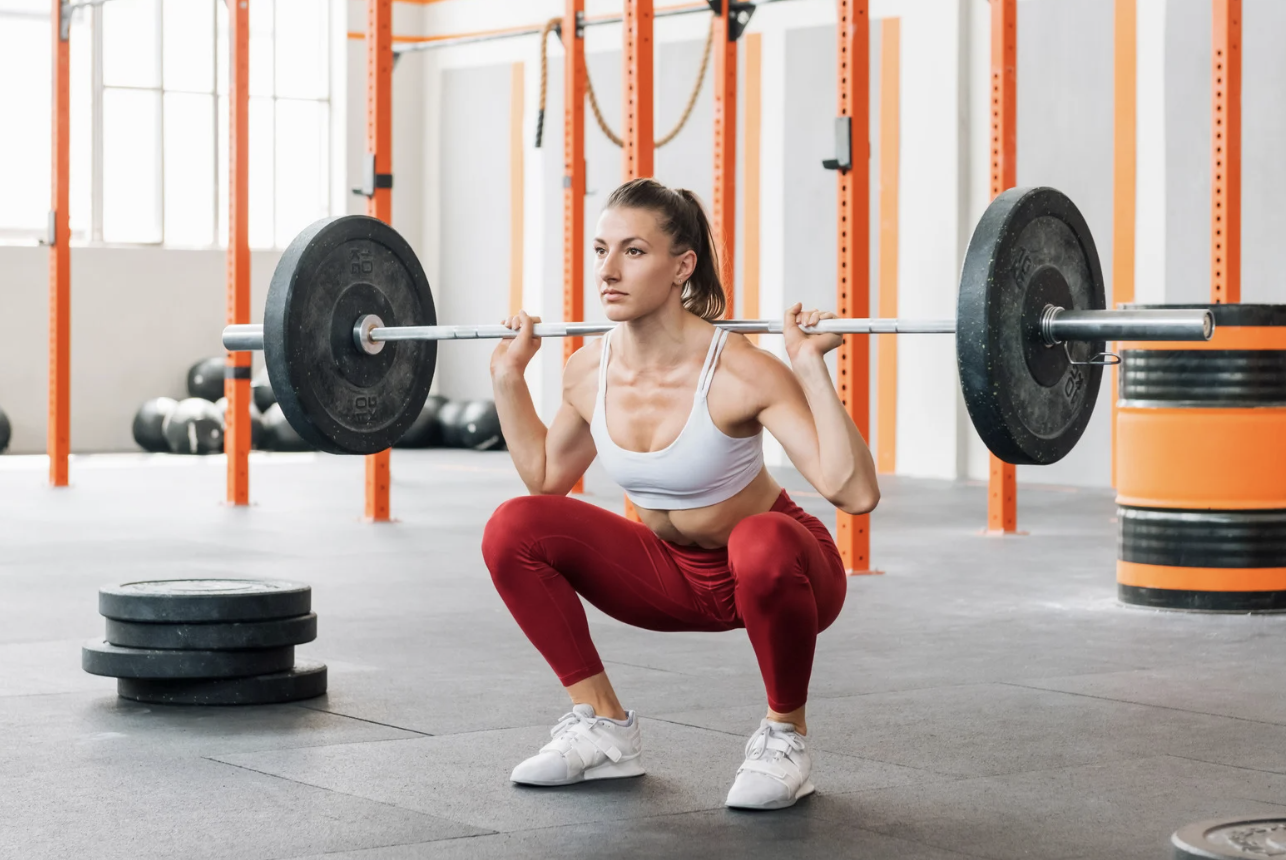How to Grow Massive Quads: Your Blueprint for Bigger, Stronger Legs
If you’re reading this, you’ve probably dreamed of quad muscles that could crush watermelons, or at least look amazing in your favorite shorts. If you’re not seeing the growth you want, you’re most likely making a few key mistakes. These might include choosing the wrong exercises, not training with enough intensity, or simply not eating enough to support muscle growth.
In this article, I’ll cover the best exercises and strategies to help you build the legs of your dreams. The good news is it’s not complicated. The bad news? It’s hard work. After some of these workouts, your legs might feel like spaghetti, and sitting down on the toilet could bring tears to your eyes.
If you’re not afraid of putting in the effort, the results you’re after are absolutely within reach. This article is here to show you how.
Why Building Big, Strong Quads is a Game Changer
When it comes to strength and aesthetics, your quads are one of the MVPs. These muscles do a lot more than make your legs look good. They’re a powerhouse for performance, and essential for everyday life. Let’s break it down.
Increased Performance
Whether you’re an athlete or just trying to crush your weekend pickup basketball game, strong quads are non-negotiable. They are the driving force behind explosive movements like sprinting, jumping, and quick directional changes. Want to jump higher, run faster, or dominate on the field? It starts with building a solid foundation of quad strength.
Even if your “sport” is hitting the gym, bigger quads help you squat heavier and deadlift more by stabilizing your knees and improving your power. Strong quads make you better at pretty much everything involving your lower body.
Aesthetic Appeal
Let’s be honest. Big quads just look good. They’re the difference between “Do you even lift?” and “Whoa, that girl could crush a watermelon.” A well-developed set of quads balances your physique, giving your legs a strong, athletic look. Plus, there’s nothing quite like the boost of confidence you get rocking a pair of shorts.
One of the Largest Muscle Groups
Your quads are one of the biggest muscle groups in your body, and training them has a ripple effect on your overall strength and fitness. Larger muscle groups burn more calories during and after your workouts, making quad training a secret weapon for fat loss. Strong quads also help support your knees and hips, which means fewer injuries and more time crushing your fitness goals.
Essential for Everyday Life
Think of all the daily movements that rely on your quads: walking up stairs, getting out of a chair, squatting down to pick up groceries, or even just standing up straight. Weak quads make these activities harder and more taxing, especially as you age. Strengthening your quads now pays off in the long run by keeping you mobile, functional, and independent.
Big, strong quads aren’t just for athletes or bodybuilders. They are for anyone who wants to perform better, feel stronger, and look their best.
Understanding Quadriceps Anatomy and Function
Before we dive into the exercises and strategies for quad growth, let’s take a moment to understand the anatomy and function of the quadriceps. The quadriceps are a group of four muscles located at the front of your thigh, and each one plays a unique role:
Rectus Femoris: Running down the center of the thigh, this is the only quadriceps muscle that crosses both the hip and knee joints. It helps with knee extension and hip flexion.
Vastus Lateralis: Found on the outer part of the thigh, this is the largest quadriceps muscle and a key player in knee extension.
Vastus Medialis: Positioned on the inner part of the thigh, it’s crucial for stabilizing the patella (kneecap) and extending the knee.
Vastus Intermedius: Located between the vastus lateralis and vastus medialis, underneath the rectus femoris, this muscle also assists with knee extension.
These muscles work together to extend your knee and are activated during movements like squatting, jumping, and running. To build quads that turn heads, you’ll need to train all four muscles using a variety of exercises and techniques.
Effective Exercises for Quad Growth
The foundation of any quad-focused training program is a selection of effective exercises that target the quadriceps in the stretched position and from different angles. Here are some of the best exercises to include in your routine:
1. Barbell Back Squats
What I love:
High tension on the quads in the stretched position.
Easy to load up, so you can challenge yourself more week to week.
One of the best exercises for lower body strength.
A great exercise if you have performance goals.
Considerations
Moderate learning curve; some lifters may need to work up to this. Start with a goblet squat and work on your ankle mobility and depth first.
Elevate your heels for more quad engagement. Bonus: it can also improve your form and depth if your ankle mobility needs work.
More weight isn’t always better. If you can’t get to parallel or your form is shaky, lower the weight or go back to goblet squats.
2. Barbell Front Squats
What I love:
Similar benefits to back squats but with even more quad tension due to the upright posture
Fantastic for core strength and mobility
Reduces stress on the spine compared to back squats
Considerations
Tricky to learn, and some find it uncomfortable.
Keep those elbows up! If wrist or lat mobility is an issue, try using straps or cross-arm holds.
3. Hack Squat
What I love:
Same benefits Barbell Squats, plus has the added benefit of an easy set up and smaller learning curve.
Less taxing on the nervous system, meaning more volume potential
One of my go-to exercises for hammering the quads
Considerations:
Not always home-gym friendly. You’ll need a hack squat machine or some creative alternatives (e.g., wall hack squats with a foam roller or landmine hack squats).
3. Bulgarian Split Squat
What I Love
Big stretch on the quads, which is a muscle-growth jackpot
Great for fixing imbalances since it works one leg at a time
Home-friendly: all you need is a bench and dumbbells (or even just body weight to start)
Improves balance and coordination
Considerations
Torturous! If you’ve ever done these you know what I’m talking about.
Mentally challenging, so I usually program fewer sets. Start with body weight and full range of motion before adding weight.
Bonus
Since the rectus femoris is responsible for both knee extension and hip flexion, exercises like squats cause it to shorten at the knee while lengthening at the hip, preventing it from being trained maximally.
To target the rectus femoris more effectively, I suggest incorporating exercises where your hips remain fixed. Here are a few examples
5. Leg Extensions
What I love:
Quick set up
Isolates the quads without frying your nervous system, meaning more volume potential
Great for finishing off your quad-focused workout
Considerations:
Machines where you can lean back more will give you a bigger stretch on your quads and be more effective
Limited strength building potential, so not as easy to progressive overload
6. Reverse Nordic
What I love
No equipment needed! You can literally do this anywhere
Massive stretch on your quads
Perfect for isolating the quads and adding volume without a ton of fatigue
Considerations
Can be very challenging. Start by using a band for assistance.
Progressive overload is challenging, but increasing your depth over time, ditching assistance, or adding reps will keep it effective.
Honorable Mentions
Walking Lunges: A dynamic quad, glute, and hamstring builder that also improves balance and coordination.
Reverse Lunges: Emphasize the quads while being gentler on the knees compared to forward lunges.
Leg Press: The leg press machine allows you to target the quads without placing as much stress on the lower back. Adjust your foot placement to focus more on the quadriceps. A lower foot position on the platform will increase quad engagement.
Sissy squats: Great for isolating the quads and getting an intense stretch, but they’re not for the faint of heart. Use support if you’re new to these.
Sprints: A sneaky way to work your quads while building explosive power at the same time.
Structuring Your Quad Workout
Maximizing quad growth isn’t just about picking the right exercises, it’s also about organizing your workout effectively. Here’s a sample quad-focused workout to get you started:
Back Squats: 4 sets of 4-6 reps 2-3 minute rest between sets
Bulgarian Split Squat: 2 sets of 8-12 reps/side 2 minute rest between sets
Hack squat: 3 sets of 8-12 reps 2 minute rest between sets
Leg extensions: 3 sets of 8-12 reps 1-2 minutes rest between sets
This setup is a powerhouse for quad growth. It kicks off with the king of all quad exercises, the barbell back squat, then follows up with quad-dominant compound movements to push your legs to their limit. With 12 hard-working sets, your quads will have all the stimulus they need to build muscle without overloading your recovery capacity.
Worried about neglecting your hamstrings? No problem just tack on a couple of sets of Romanian deadlifts or leg curls at the end of your workout, or on a different day, to keep things balanced and your posterior chain happy.
Nutrition for Quad Growth
If you’re serious about building massive quads, you’ve got to nail your nutrition. Think of it like building a house. You can have the best blueprints, the money to fund the project, and a team ready to work, but without the actual materials? That house isn’t getting built. The same goes for your muscles. Without enough calories or protein, your growth will stall no matter how hard you train.
Aim to eat at maintenance or in a slight calorie surplus. Make sure you’re getting at least 0.7g of protein per pound of your ideal body weight, and don’t skimp on carbs. They're your main fuel source for those leg-day workouts that’ll leave your quads crying in the best way.
If you want to learn more about proper nutrition for your goals here’s a great article.
Other Tips
Progressive Overload
If you want bigger quads, you’ve got to keep challenging them. Gradually increase the weight, volume, or intensity of your workouts over time. Progressive overload isn’t just a fancy fitness buzzword, it’s the secret sauce for muscle growth and the backbone of a solid training plan.
Rest Long Enough Between Sets
Don’t rush your rest periods. Taking enough time to recover between sets allows you to give every set your absolute best effort, which is where the magic happens. If you’re cutting rest short and dragging through your sets, you’re leaving gains on the table.
Here’s a pro tip: if you can breeze into your next set without breaking a sweat, chances are you’re not pushing yourself hard enough. Either crank up the weight or add more reps to the mix.
Train Hard
Let’s be real, if your quads aren’t growing and you’ve checked all the other boxes, you might not be training hard enough. To see results, you need to push your sets close to failure. You don’t have to hit absolute failure on every set, but stopping 1–2 reps shy is where the magic happens.
To truly know your limits, I recommend going to failure occasionally. You might be surprised at how much gas is left in your tank. Most people quit 5-6 reps too early without realizing it. Don’t be that person.
Periodization
Keep your training exciting and effective by incorporating periodization. Mix things up every so often. Adjust your rep ranges, swap out exercises, or tweak your training volume. This keeps you mentally engaged, helps you avoid plateaus, and gives your body a fresh stimulus to continue to adapt and grow.
Conclusion
Building massive quads takes hard work, smart programming, and consistency. Whether you’re chasing strength, aesthetics, or just want to feel unstoppable during everyday tasks, focusing on your quads is a game-changer. With the right exercises, proper nutrition, and a progressive approach to your training, you can take your quad gains to the next level.
So, lace up your gym shoes, grab that barbell, and start putting in the work. Remember, those “spaghetti leg” days are just the price of admission for the quads of your dreams. Now, go crush it!
Ready to take your training to the next level?
Check out my 6-Week Training Program designed to build strength, muscle, and confidence. Click the link below to get started today!
-
Aim to train your quads 2–3 times per week. This frequency allows for sufficient stimulus while providing adequate recovery time.
-
Nutrition is crucial. Ensure you're consuming enough protein to support muscle repair and growth, and maintain a slight calorie surplus if your goal is to increase muscle mass.
-
This depends on your experience level and genetics. I would recommend 6-10 hard sets if you are a beginner, 12-18 if you are an intermediate lifter, and 20+ if you are more advanced.








